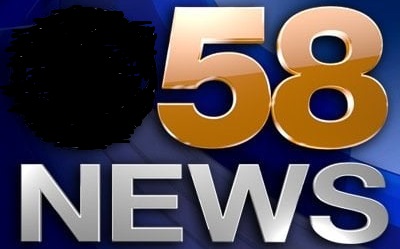The secret truth of the ESPN-YouTube TV feud

It didn’t take long after the first week of football blackouts on YouTube TV for sports fans to adopt a conspiratorial bent.
“ESPN is trying to make us think this is YouTube TV's fault, when they're actually just trying to add new subscribers to their new standalone DTC app,” a now-viral post from the X account @JoshOnAir reads. “Unbelievable. Don't fall for it people. ESPN / Disney are the worst.”
@JoshOnAir’s opinion was parroted in a handful of viral posts that only seemed to gain steam over the weekend, as consumers missed out on three days’ worth of college and pro football on ESPN networks. It was easy to understand the frustration: Sports fans were missing out despite their role as dutifully paying customers, while the suits at YouTube TV and Disney haggled over shekels in a stalemate with no end date in sight.
Before long, the arguments fell across familiar political lines: Greedy corporations exploiting the common man, profits stolen with little concern for consumers, and the continued enshittification of yet another valued institution.
But there was a problem. These arguments were largely … untrue. The stalemate between ESPN and YouTube TV wasn’t about ESPN’s efforts to remove itself from cable TV, but about ESPN’s still considerable desire to remain on cable. The network was holding onto an inconvenient secret about its business, and the showdown with YouTube TV provided a glimpse behind the curtain.
——
More than any show or talking head, ESPN’s success can be traced back to a single holy grail: For every viewer who tunes in, ESPN gets paid twice.
First, advertisers pay ESPN for the right to air commercials, and second, cable providers pay ESPN for the right to air the network. This second payment is called a “carriage fee,” and it amounts to around $ 10 per subscriber per month – an enormous coup responsible for much of ESPN’s profitability over the last three decades.
Carriage fees are operated on a contractual basis, and need to be renegotiated every few years, which is what led to the current stalemate between YouTube and ESPN. According to YouTube TV, ESPN is asking for too much from its next set of carriage fees, while according to ESPN, YouTube TV wants a better rate than any of its cable TV counterparts.
As with most corporate disputes, the truth lies somewhere between, and is overshadowed by a much larger reality: The cable TV model is collapsing. Today, cord-cutting has made the cable business resemble the newspaper business of 30 years ago: Still profitable, but steadily losing ground. The latest estimates place standard pay-TV bundles in 65 million homes, down from more than 105 million in 2010.
For ESPN, the downside of that shift is potentially cataclysmic. The network has been backed into a corner: Either raise the cost of carriage fees consistent with the decline in cable customers, or find a way to recoup that money directly from consumers.
That rock-and-hard-place leads us into today’s rock-and-hard-place: Where ESPN has launched its own direct-to-consumer app allowing sports fans to pay $ 30 per month for an all-access pass to the network, and where a feud with YouTube TV over increased carriage fees has spilled out into the open.
If you find yourself thinking, doesn’t this feud help ESPN launch its new product, speeding the eventuality of cable TV’s demise? Well, you’d be correct. Except for one key point: ESPN doesn’t want its customers fleeing cable TV for a $ 30/month app. In an interview on Peter Kafka’s brilliant Channels podcast last month, ESPN CEO Jimmy Pitaro laid out the issue plainly.
“If you access us directly, the biggest problem we are going to have is churn,” Pitaro said. “If you go back to the [cable] ecosystem, you don’t have much of a churn problem. It’s really easy for me to turn a streaming service on or off. I do it all the time. It’s much harder for me to do it on cable.”
Pitaro’s point? Every cable subscriber lost for the ESPN DTC app represents a high-risk departure. The goal is to slowly build the DTC audience, eventually creating an ESPN app that provides value to customers for 12 months out of the year, discouraging people from holding their subscriptions only during, say, football season.
In Pitaro’s view, the goal of the new app is to pull from the 60 million people who have left cable in the last two decades, not the 65 million who remain, because the 65 million who remain present a low-risk path to billions in revenue in the short term.
“We’ve wanted to protect [traditional cable],” Pitaro said. “By the way, we still believe there’s a ton of value in the traditional ecosystem.”
The subtext of this point is hard to ignore. For the time being at least, ESPN needs cable providers at least as much as cable providers need the network. In the current fight for the latest batch of carriage fees, that sense of leverage might provide YouTube TV with an upper-hand.
Of course, that upper-hand might manifest in several weeks without ESPN on YouTube TV – an ugly outcome that would harm both sides of the carriage fight. But with nearly eight weeks until the next stretch of golf programming on the network – the launch of TGL season two on Dec. 28 – golf fans have plenty of time.
Rest assured, an agreement will be reached, and lots of money will be made. That’s the way the cable business has always worked for ESPN. But those times are changing … and in the long term, that might not be a bad thing for the people paying.
The post The secret truth of the ESPN-YouTube TV feud appeared first on Golf.










